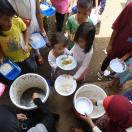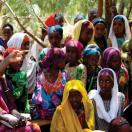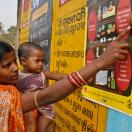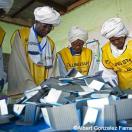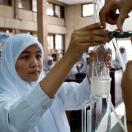Evidence gap maps

3ie has developed an interactive online platform that allows users to explore the evidence in a particular evidence gap map (EGM), with links to user-friendly summaries and full-text articles where available.
What are evidence gap maps?
Our EGMs are thematic collections of information about impact evaluations and systematic reviews that measure the effects of international development policies and programmes. They present a visual overview of existing and ongoing studies or reviews in a sector or sub-sector in terms of the types of programmes evaluated and the outcomes measured. This evidence is mapped onto this framework, graphically highlighting the gaps, where few or no impact evaluations or systematic reviews exist and where there is a concentration of impact evaluations but no recent high-quality systematic review.
How we create our maps
EGM methods draw on the principles and methodologies developed for systematic and transparent evidence review. We consult relevant decision makers and stakeholders, often in the form of an advisory group, to decide on the thematic or sector focus. These consultations are held at the start of the mapping to discuss the scope, questions and framework and to review draft findings at the end of the mapping.
We then conduct a systematic search to identify relevant published and unpublished impact evaluations and systematic reviews, and include both completed and ongoing studies and reviews. We describe characteristics of the evidence base and populate the map framework with studies and their respective links to summaries and, when available, full-text reports. In the case of systematic reviews, we also include a confidence rating of how the review was conducted to help decision makers gauge how much to rely on that evidence.
For a conceptual introduction to 3ie EGMs, please read Evidence gap maps: a starting point for strategic evidence production and use, 3ie Working Paper 28. For a more detailed discussion on evidence gap maps and methods, read the Journal of Clinical Epidemiology paper authored by 3ie's systematic review experts.
To commission a map or collaborate to create a map, visit our Evidence mapping page.
How to use them
EGMs are a useful tool for development decision makers looking to see what evidence exists to inform policies and programmes. For funders and researchers, these maps show where more investments are needed or where they can avoid duplicating existing research.
Each EGM adopts a framework designed to systematically capture different interventions and outcomes associated with an intervention. EGMs do not provide recommendations for policy and programming or guidelines for practice. They provide links to resources that can inform policy or programme development.
Check out our video on how to use an evidence gap map.
Download How to read the evidence gap maps.
We no longer provide open access to the EGM platform. Want to learn more? Drop us a line at info@3ieimpact.org for a personalized consultation with an Evaluation Specialist.
